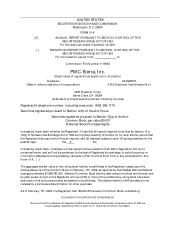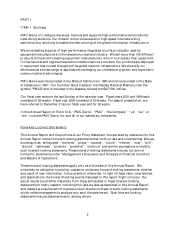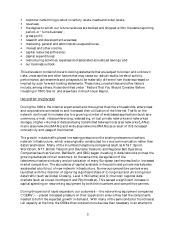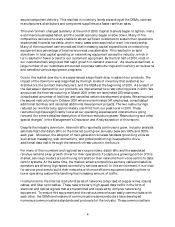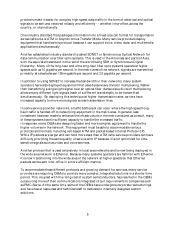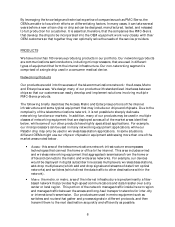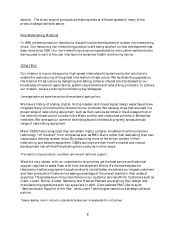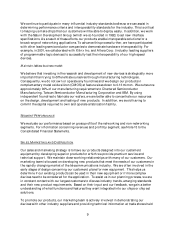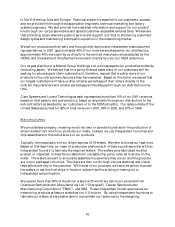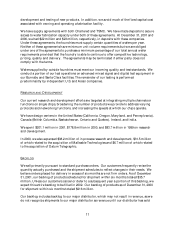Adaptec 2001 Annual Report Download - page 4
Download and view the complete annual report
Please find page 4 of the 2001 Adaptec annual report below. You can navigate through the pages in the report by either clicking on the pages listed below, or by using the keyword search tool below to find specific information within the annual report. 4
secure component delivery. This resulted in inventory levels expanding at the OEMs, contract
manufacturers, distributors and component suppliers at a faster rate than sales.
This environment changed suddenly at the end of 2000. Capital markets began to tighten, many
e-commerce businesses failed, and the overall economy began to slow down. M any of the
competitive carriers who were unable to attract sufficient customers to sustain their operations
experienced financial hardship, and in many cases were acquired or w ent into receivership.
Many of the incumbent carriers realized that increasing capital expenditures on networking
equipment as a percentage of total revenue was unsustainable. This resulted in a rapid
slowdown in total capital spending on networking equipment across the industry, w hich in
turn resulted in fewer orders for our customers’ equipment. By the first half of 2001, most of
our customers had recognized that rapid growth in demand w as over. As revenues declined, a
large number of our customers announced corporate restructurings and inventory write-downs
and cancelled various equipment programs.
Due to this market downturn, w e experienced a significant drop in sales of our products. The
impact of the downturn was magnified by the high levels of inventory that existed at our
distributors, the contract manufacturers, and the OEMs at the beginning of 2001. A s a result of
the decrease in demand for our products, we implemented two restructuring plans in 2001. We
announced the first restructuring in March 2001 when we terminated 223 employees,
consolidated a number of facilities, and cancelled certain development projects. We announced
the second restructuring in October 2001 when we terminated 341 employees, consolidated
additional facilities, and cancelled additional development projects. The two restructurings
reduced our workforce by approximately one-third from our peak level in 2001. These
restructurings have significantly lowered our operating expenses and cost structure going
forw ard (for a more detailed description of the two restructurings see “ Restructuring and other
special charges” in the Management’s Discussion and Analysis section of this report).
Despite the industry downturn, Internet traffic reportedly continues to grow. Industry analysts
estimate that total data traffic on the Internet could grow annually between 100% and 300%
each year. Moreover, the adoption of next-generation w ireless handsets (providing voice as
well as text messaging, w eb connectivity, and global positioning) is expected to drive
additional data traffic through the network infrastructure in the future.
For many of the incumbent and regional service providers, data traffic and the associated
revenue remains a key growth driver for their operations. To capture a growing portion of this
market, service providers are continuing to transition their networks from voice-centric to data-
centric systems. At the same time, the market remains competitive as many cable and satellite
operators are offering high-speed connectivity services as well. In this environment, it is critical
for service providers to build their networks with more efficient equipment enabling them to
lower operating costs while handling the increasing amount of traffic.
In simple terms, the Internet is a hybrid series of networks comprised of copper w ires, coaxial
cables, and fiber optic cables. These netw orks carry high-speed data traffic in the form of
electrical and optical signals that are transmitted and received by complex networking
equipment. To ensure this equipment and the various netw orks can easily communicate with
each other, the OEMs and makers of communications semiconductors have developed
numerous communications standards and protocols for the industry. These communications

